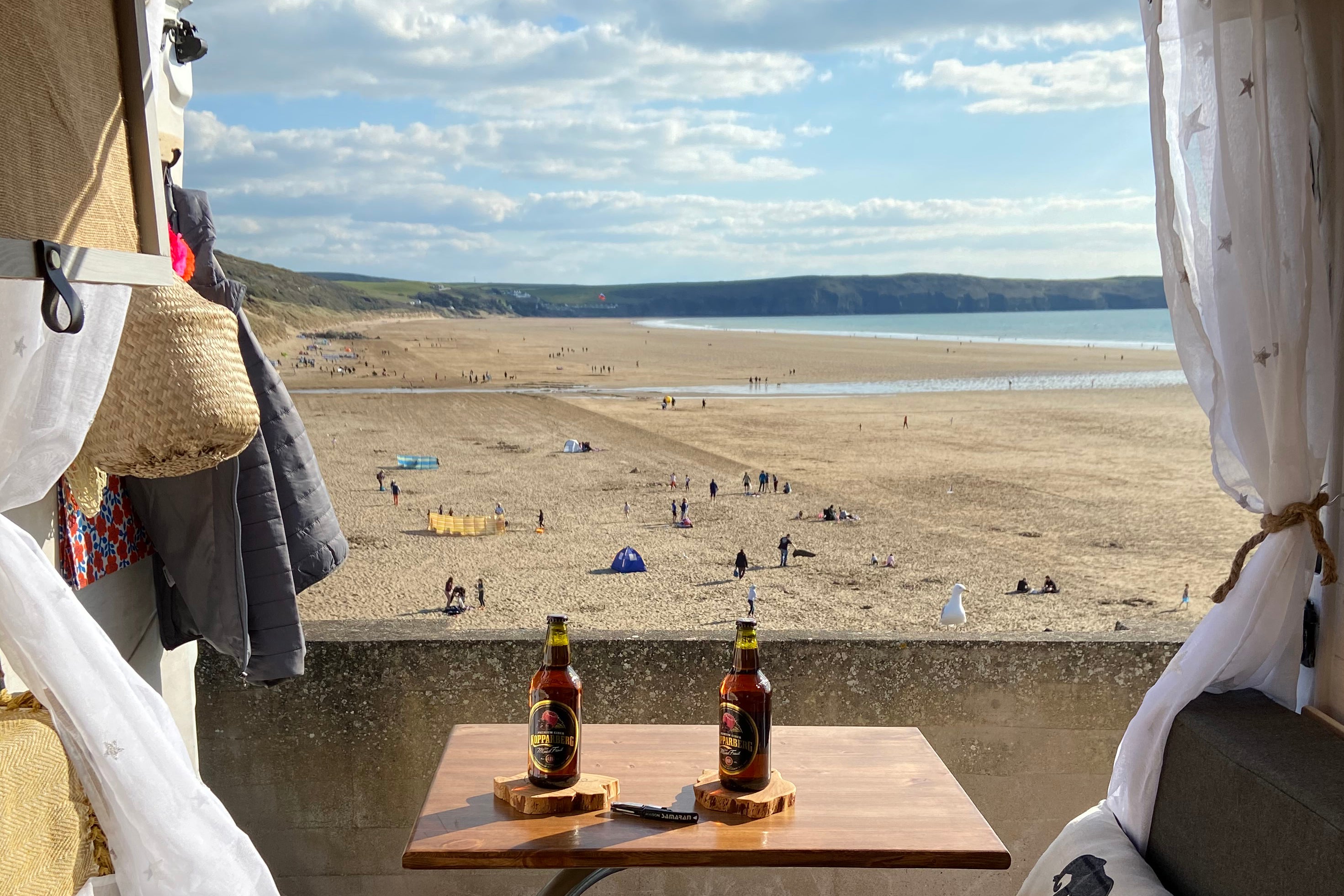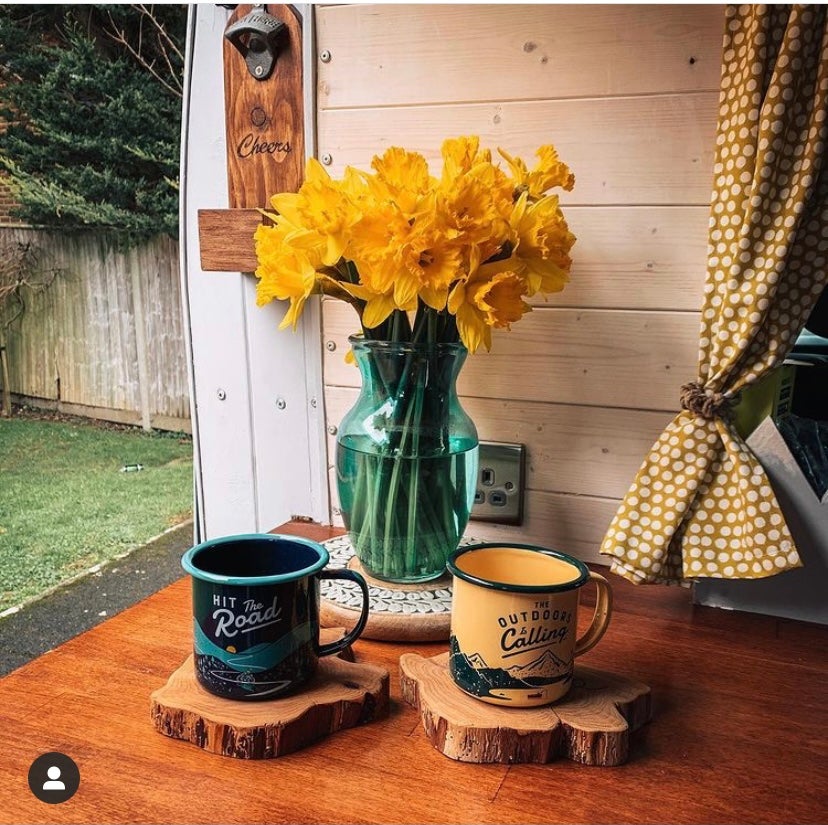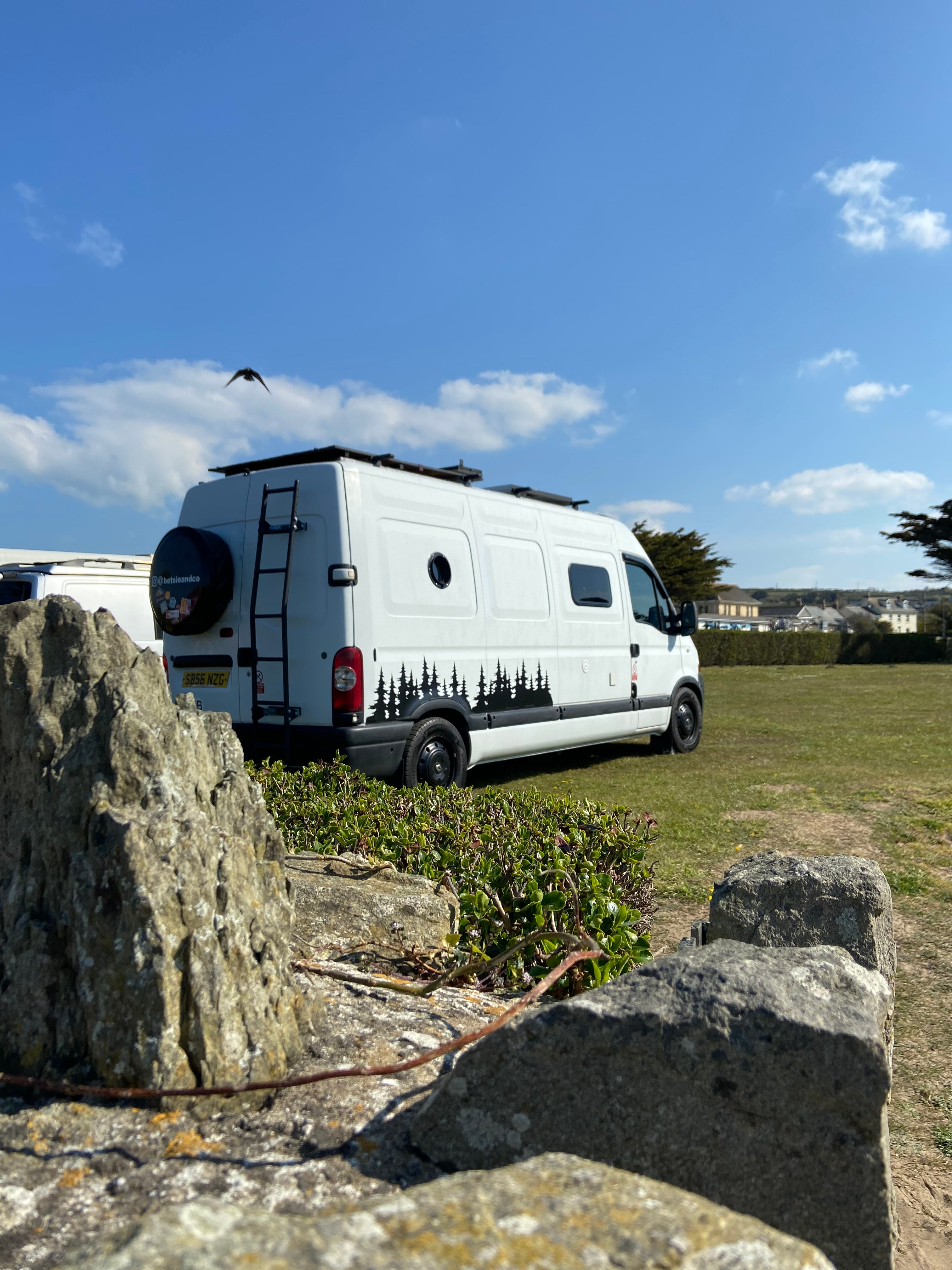#Vanlife: modern-day nomads getting away from it all or just another Instagram fad?
For some a house on wheels is living the dream – for others this far from new culture represents an endless photo opportunity. Andy Martin catches up with one couple in their converted Renault van


Now that – very gradually – the world is opening up again, where do you want to go? For most people, the answer would be: anywhere but here. And how, with some measure of caution, are you going to travel? If you want to avoid the viral-shedding crowd, it can’t be a plane or a train. The obvious answer is: in a bubble. I’ve flirted with the hot-air balloon, but the fundamental reality is that what goes up must come down. A bubble on wheels would be way more practical. I used to dream of a non-stop surfari on board a Volkswagen camper. It only took one trip for me to realise it was a bit cramped and there was a lot of bending and stooping involved. Then I discovered vans, or one van in particular.
This is not so much the Lady in the Van as the Woman, the Man, and their Dog in the Van. Alan Bennett’s memoir – filmed with Maggie Smith – is essentially a story of a homeless old woman who happens to live in a delapidated old van parked in his driveway. The more recent Nomadland (now showing in cinemas) strikes a similar note of pathos and melancholy. Frances McDormand wouldn’t have chosen to buy her van if not for her husband dying. She accepts her fate with gritty stoicism. The original book the film is based on, by Jessica Bruder, depicts an impoverished senior sub-culture, haunted by recession, drifting desperately across America – invoking the climactic scene of Thelma & Louise as the only way out.

But you have to bear in mind that the freewheeling life on the road isn’t always like that. The van isn’t always a vehicle of last resort. There is a fresh wave of enthusiasm for what has become established as “vanlife” among a younger generation who are more hedonists and hipsters than hardup hobos. In the US in particular, it’s become such a trend that a surfing friend of mine who used to roam up and down the West Coast from San Francisco to San Diego despairs of the rampant commercialism.
“It’s an absolute inversion of what it meant to live back in the 1970s,” says Matt Warshaw, the author of The Encyclopedia of Surfing (and curator of the website eos.surf). “Vanlife is done as an Instagram hook, as a way to say LOOK AT ME AND HOW MUCH BETTER MY LIFE IS THAN YOURS, and to pick up sponsors who pay so that you include their products in your shots and captions.” He draws attention to the apparent contradiction or hypocrisy: “There is an added bullshit factor in that the lifestyle being sold is all about unplugging, getting away from it all, simplifying, but really it’s just one long endless photo op. And it seems designed specifically to make everybody else feel bad about their own lives.”

He’s right that it’s become an instagram fad (hashtag vanlife with about 10m followers). But it’s not all bad. The phenomenon has definitely taken off over here too. Which is how I came to meet Betsie, Natalie, Callum and Finn. Natalie Derham-Weston and Callum Read, both in their twenties, are two of the new nomads, Finn is their loyal three-year old border collie who travels with them, and Betsie is the name they have given to their new home, formerly a Renault Master Long Wheel Base, High Roof 2007, with 66,000 miles on the clock.
You don’t need much to be happy. It’s a relaxed way of life – it’s slow. People say how lucky we are. And we are. But we chose this. It wouldn’t be everybody’s cup of tea
So far as I know, none of them have sponsors. They are all – to some extent – living the dream of freedom and adventure. It’s Easy Rider without the chopper handlebars.
“The bulkhead had to go,” said Callum. It was first thing he said to me. The second was: “If we’d been any taller we would have to re-design it.” Callum and Natalie bought the van in 2019, pre-pandemic, and now it’s their home. Even though they started out as total novices, they’ve done all the work themselves. “He ended up doing most of the hard work,” says Natalie. “I mainly made the cushions.” There are a lot of cushions, all rather beautifully embroidered. Callum did all the plumbing and insulation and the electrics – the batteries and the sockets and the fuse box.
When I went to meet them on the south coast, they had just returned from their inaugural journey – 10 days in Devon and Cornwall, with a long weekend in Croyde Bay. Before Covid hit they had far grander plans: a ski season in Norway, perhaps. They still have the snow chains ready to go on.They put in the log burner specifically to be prepared for colder climes. And they have an axe for chopping logs too. “A friend said we could drive down to South Africa,” says Natalie. There was even talk of the ultimate road trip – all the way to New Zealand. Then it was put on hold. But not for much longer.

Betsie cost £3,700; Natalie and Callum spent around £10k and the best part of a year on kitting it out. They now have a house on wheels or “wheel estate”. And just as with any house, they are still tinkering with it. They recently added a porthole window, which gives it the feel of a yacht on the road. It reminds me more than anything of one of the narrow boats that cruise the length and breadth of our canals, which have relied for centuries on the art of packing a lot into a small space. It’s not so much minimalism as miniaturism. An extension of “Tiny Living”.
“It’s all very cosy,” says Natalie, inviting me in for a tour. Inside, it’s like a real house, just very compact. There’s a kitchen with an electric stove and cooking utensils and a fridge. A bathroom, with a shower (and 20 litres of hot water) and a chemical loo. A bedroom, which doubles as a living room with sofas. There is even a TV/film room (when a screen is unfurled). I can put the kettle on and sit and have a cuppa at the table. There’s a carpet on the floor, a mirror on the wall, and a dog bowl with Finn’s name on. “You’ve got a home you can live in,” says Natalie. “Finn loves it in here.” There are so many nice touches: coasters which they made themselves, swatches of fabric to stop the plates rattling, even incense sticks and bottles of wine, neatly stowed.

Natalie and Callum, unlike the Ladies in the Van, are not broke. They don’t have to live like this. They both have (or had) full-time jobs, Natalie in landscape gardening and Callum in media and photography. “Neither of us is on a huge salary,” she points out. They first met during a ski season in Alpes d’Huez in 2017 when they were working in a hotel and started talking about their wanderlust.
And in case you’re worrying about their security when they’re parked up in some farflung, if not necessarily godforsaken, spot they have taken appropriate precautions, installing extra bolts, CCTV, and wheel locks. They say they picked up a lot of tips from other vanlifers (with whom they are in touch via phone or laptop and blogs galore). “It’s like a community,” says Natalie. “Everyone is very supportive, encouraging and helpful actually.” A vanlifeeats.com page offers a range of recipes specifically for life in a van (with a special section for “vanlife vegans”). If you like barbecues, this is for you.

Betsie was put through her paces in the West Country. “Everything worked,” says Callum. “The only slight faf was putting the bed back in the morning.” Natalie is a great evangelist for life on the open road. “I like the fact that you can choose where to go. The options are endless. We were inspired by the idea of travel, but also by the necessity to do it on a budget. I don’t know what our long-term plan is. But people do live in vans all the time.”
The van is not just a home, it’s an office, it’s a business, but as mobile as a phone. It’s not like a caravan or turning up at a rave, it’s more like WFH, but anywhere in the world
I climb up the ladder on the back to the “sundeck”. There are solar panels up here and comfortable seats that fold up and down. “You can rest and enjoy the view,” says Natalie.
Her philosophy is: “You don’t need much to be happy. It’s a relaxed way of life – it’s slow. People say how lucky we are. And we are. But we chose this. It wouldn’t be everybody’s cup of tea.”
Callum has now quit his job. He realised he can make a sustainable living at converting vans. “The first one was just the learning curve,” he says. “You buy all the tools the first time around, so it’s cheaper to do the second.” He would put in more windows the next time. And maybe the wood-burning stove, custom-built in Glastonbury, is a bit of a luxury. “It’s a nice touch but not too practical.” They might go for a diesel heater the next time.

Callum and Natalie have now bought another van, a Citroën Relay (2011), for which they paid just over £10k. They’ve already christened it “Red”. The plan is to do a conversion, hopefully for around £5k, and then sell it on. Demand is high and the going rate is around £23k. Callum says: “Our end goal is to make it a long-term business. A lot of people want the vans. But not everyone wants to put in all the hard work.”
The van is not just a home, it’s an office, it’s a business, but as mobile as a phone. It’s not like a caravan or turning up at a rave, it’s more like WFH, but anywhere in the world, where “remote” really means remote. Their next destination: Wales and Scotland. Natalie says: “People have begun to realise that there are so many cool places in this country.”
Read More:
They have room in the van for one more thing: a tennis ball. I pick it up and throw it for Finn to chase for about the tenth time: he is so fast (and seemingly inexhaustible) he gets to the ball almost before it lands. I can’t help wondering if I can find the £23k – and, like a dog off the leash, take the leap into the unknown.
The Instagram handle of Natalie Derham-West and Callum Read is “Betsieandco”.
Andy Martin is the author of ‘Surf, Sweat and Tears: the Epic Life and Mysterious Death of Edward George William Omar Deerhurst’ (OR Books)
Join our commenting forum
Join thought-provoking conversations, follow other Independent readers and see their replies
Comments